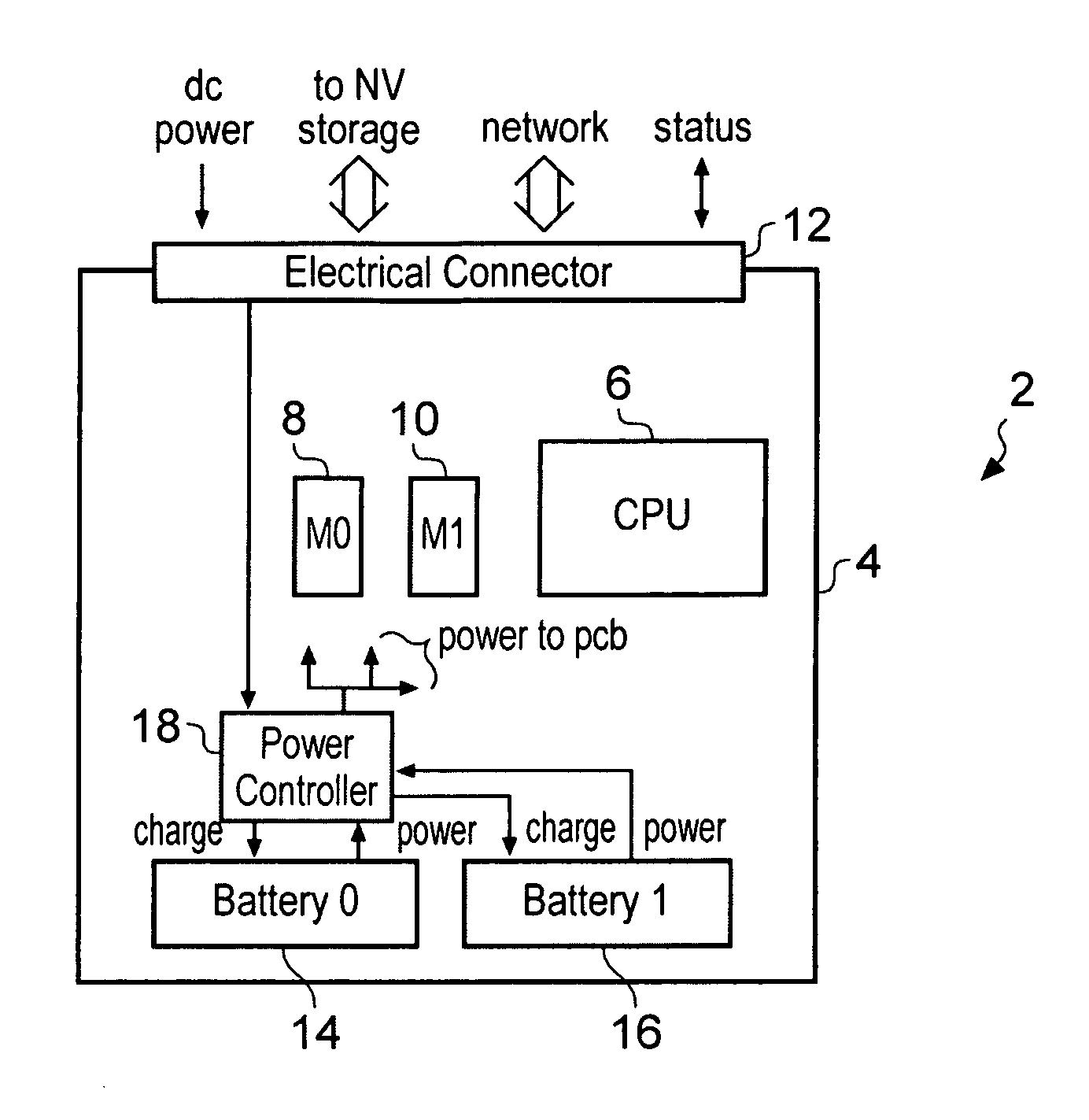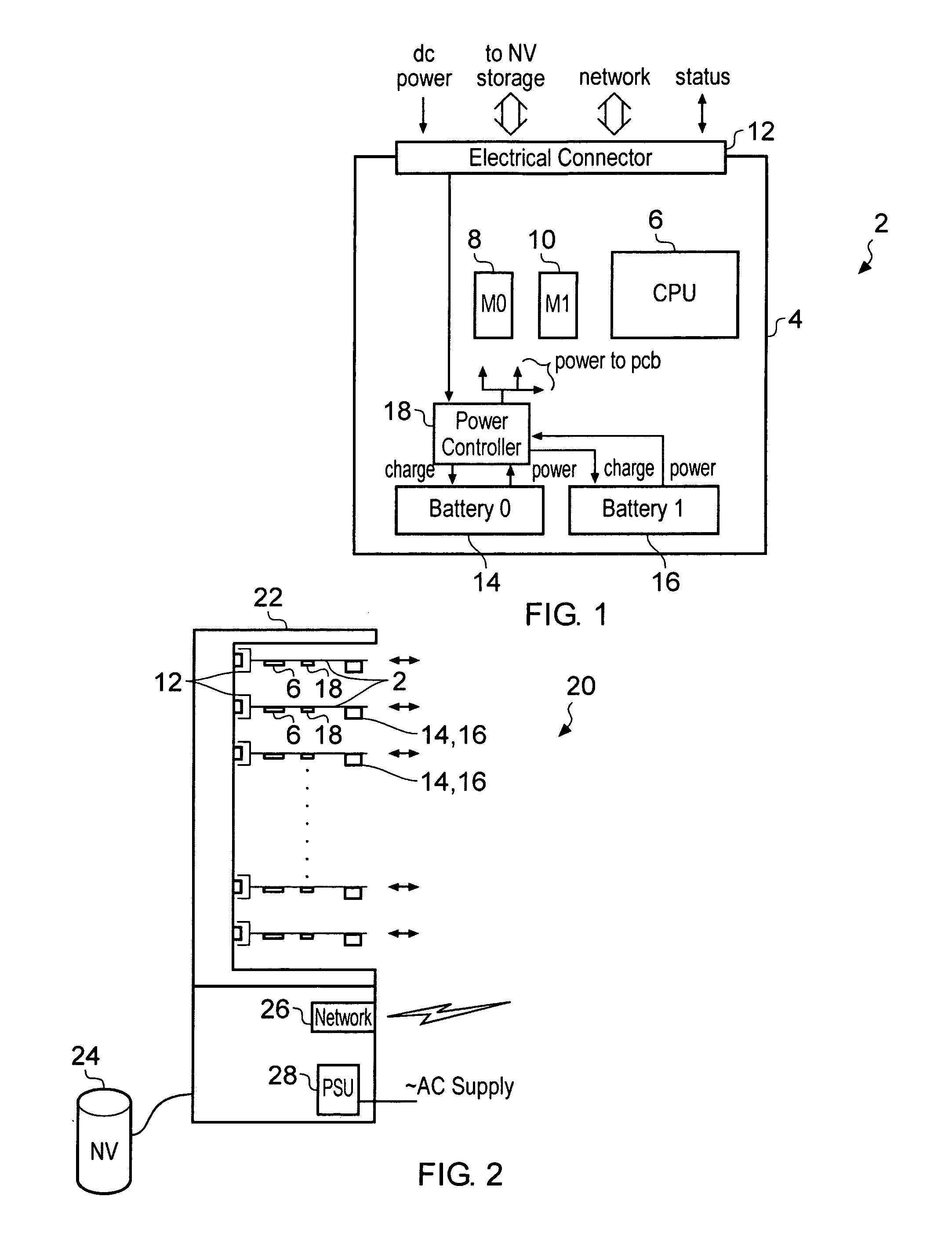Blade server
a server and blade technology, applied in the field of blade servers, can solve the problems of large power requirements of high-performance processors, and achieve the effects of reducing the cost and maintenance overhead associated with the provision of such centralised uninterruptible power supplies, more power efficient processors, and higher power density batteries
- Summary
- Abstract
- Description
- Claims
- Application Information
AI Technical Summary
Benefits of technology
Problems solved by technology
Method used
Image
Examples
Embodiment Construction
[0061]FIG. 1 illustrates a blade server 2 in the form of a printed circuit board 4 carrying a plurality of components, such as a processor 6 and on-board memory 8, 10 which together permit execution of a stream of program instructions. Some of the on-board memory 8, 10 may provide on-board non-volatile storage, e.g. a flash disk drive. It will be appreciated that many further on-board computing components are typically be provided such as, network interface units, memory controllers for communicating with non-volatile memory, such as hard disk drives located outside of the blade server 2, etc. An electrical connector 12 is provided at one edge of the blade server 2 and, in use, is connected to a blade enclosure. The electrical connector passes the main power supply (DC power) to the blade server 2 with this main power supply being used to power the blade server 2 when it is available. The electrical connector may additionally pass signals communicating with non-volatile storage (suc...
PUM
 Login to View More
Login to View More Abstract
Description
Claims
Application Information
 Login to View More
Login to View More - R&D
- Intellectual Property
- Life Sciences
- Materials
- Tech Scout
- Unparalleled Data Quality
- Higher Quality Content
- 60% Fewer Hallucinations
Browse by: Latest US Patents, China's latest patents, Technical Efficacy Thesaurus, Application Domain, Technology Topic, Popular Technical Reports.
© 2025 PatSnap. All rights reserved.Legal|Privacy policy|Modern Slavery Act Transparency Statement|Sitemap|About US| Contact US: help@patsnap.com



